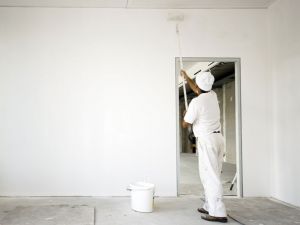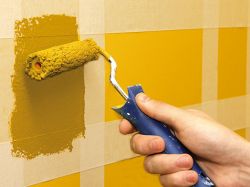
Painting works are an important part of the overall presentation and they represent expensive various operations aimed to beautify, highlight and protect the space in which we live or work.
They can be divided into two main groups of works:
* Preparatory works
* Finishing works.
The term preparatory work shall mean all activities which are necessary for normal performance of other works. Protection using nylon, filling the channels of electrical or plumbing Installation and preparation of extremely rough and uneven surfaces for smoothing.
Smoothing is the first step in the final processing of wall and ceiling surfaces. Smoothing can be accessed at a number of ways depending on which layer is applied as a finishing layer. The main purpose is to fill certain irregularities and elimination of defects that occur during the renovation of an apartment. It is performed using smoothing mass and mass for fine leveling in layers on the previously prepared surface. It is important to emphasize that before smoothing, primer or base whose role is to achieve better connections between plaster and surface to be treated, needs to be applied.
Depending on the substrate to which the leveling is applied, process and length of drying differentiate, as well as the amount of material used. Smoothing is usually performed in two layers if the surface is adequate. The final layer is polished with sandpaper, and the procedure is done with machine in order to obtain a uniform result. The second layer of smoothing is the same as the first with the difference in mass being somewhat sparsely. This procedure can filled any unevenness. After drying, grinding is again accessed which leads to a fully flat wall without protrusions and depressions.
After a fine smoothing of walls using plaster mass, next step is approaching to painting and finishing works. This is the process of applying various kinds of colors on the walls. The color is applied in several ways: using roller, brush or compressor.
The color, depending on the composition, dilutes with appropriate solvents, diluents and similar means. In addition to the decorative role, color has a protective role in surface coating.
Staining can be done using wide range of colors. Quality is determined by the choice of color type and choice of manufacturer.
Colors can be divided into several basic categories:
* Half dispersive paints - not resistant to wet wipe
* Dispersive paints - resistant to wet wipe
* Acrylic paints - highly resistant to wet wipe, suitable for maintenance
The main difference in choosing the color quality is in the tones that we get. Strong tones cannot be achieved using half dispersive paints, while using acrylic paint all the tones can be achieved. The colors are different in terms of resistance to abrasion. Acrylic paints are more durable and are waterproof.



